 |
|
68th Montana Legislative Session
January 2nd kicked off Montana's 68th Legislative Session. One can find information on the session, committee hearings, bills and so much more here to go to the Montana Legislature Services Web page.
|
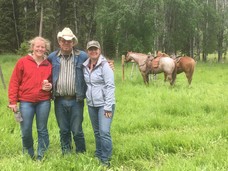
2023 Working Lands Internship Program
The Working Lands Internship program applications are due February 1st. This unique internship program provides students an opportunity to learn about Montana agriculture from a rancher. It is a 12-week program where students rotate through 6 working ranches across the state, 2 weeks at a time. Students live with the host ranch, work alongside families who make their living off the land. Ranch hosts also take the interns to community meetings such as Conservation District, Weed Board, Commissioner and local work group. If you are interested or know someone who may be, applications are due February 1st and can be found here https://dnrc.mt.gov/Conservation/Conservation-Programs/Rangeland-Resources/montana-working-lands-internship-programs.
If you are interested in being a host, please contact Stacey Barta for more information and details at sbarta@mt.gov or 406-594-8481.
|
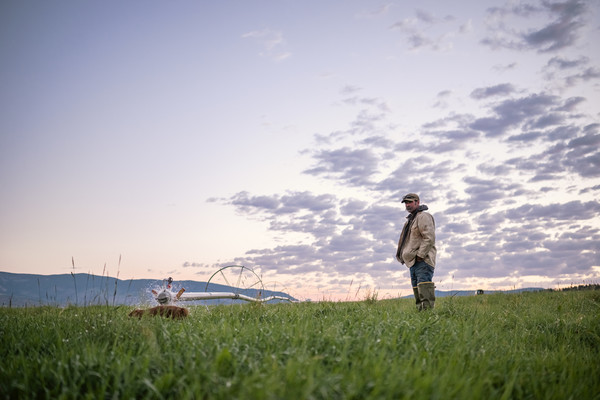 Know a Montana rancher, farmer or forestland owner who goes above and beyond in the stewardship and management of natural resources? Nominate them for the 2023 Montana Leopold Conservation Award®.
Nominations may be submitted on behalf of a landowner, or landowners may nominate themselves. The application can be found here.
The application deadline is March 15, 2023. Applications can be emailed to sbarta@mt.gov or postmarked by March 15, 2023, and mailed to:
Leopold Conservation Award
c/o Rangeland Resources Program Coordinator
Dept. of Natural Resources & Conservation
P.O. Box 414
Clyde Park, MT 59018
The University of Nebraska-Lincoln takes a look at the implications of the long drought and the future calving seasons.
Karla H. Wilke, UNL Cow/Calf Systems | Dec 01, 2022
Beef Magazine
by Jim Keyes - USU Extension Area Animal Scientist; e-mail: jim.keyes@usu.edu
When winter hits and temperatures drop below freezing, it becomes harder to keep a fresh water supply for cattle grazing on range. It can be difficult to access areas to cut ice and open reservoirs or to haul tanks of water.
Many wonder if cows can eat snow in the winter to supply all their water needs. The answer is yes. There are many situations where cattle can survive on snow without having any other water supply. Many ranches throughout the West and Midwest with cattle on large pastures and few or no water resources depend entirely on snow for winter grazing.
Just turning cattle loose on the snow sounds like a very simple management technique, but it requires that ranchers pay very close attention to the animal’s body condition and general health.
Several studies have shown there is no reason to expect cattle performance to deteriorate when animals use snow for water. Researchers found cows using snow for water did not differ in live weight amount of body fat compared to cows receiving water. Full article here.
Helping cows cope with cold stress
Consider Distiller's grain, if you haven't already as a feed option.
Mary Drewnoski and Karla H. Wilke, University of Nebraska-Lincoln | Jan 02, 2023
Cold stress increases a cow’s energy requirement and can pull down her body condition. Thin cows can result in weak calves being born in the spring and/or poor breed up. Winter storms have already swept across the Plains, giving indications this could be a long, cold winter for cows already thin due to summer drought stress.
The threshold at which cattle have to start using energy to maintain their body temperature is called the lower critical temperature (LCT). Cows in good condition (BCS 5.0; 1-9 scale) that have a heavy winter coat that is dry do not need to use energy to maintain body temperature until the wind chill index is below 19°F. Providing wind protection can decrease energy needs by removing wind as a factor. If cows have protection from wind, then the ambient temperature can be used to determine energy needs. So, providing wind protection in the winter can be huge for reducing supplementation needs due to cold in the winter.
Canada’s Farm Whisperer…
finding harmony through understanding TM
Elaine Froese (pronounced ‘phrase’), CSP is a certified professional speaker, certified coach, and author. She’s a go-to expert for farm families who want better communication and conflict resolution to secure a successful farm transition.
As a farmer and mother to the successor of their farm, she understands the culture of agriculture intimately.
Her superpower is helping families find harmony through understanding.
Her expertise is to discuss what she calls the Undiscussabull™ – the bull in the middle of the farm family that no one wants to talk about.
She is an award-winning author who’s written 5 books over the past 25 years. For more information check out her website Meet Elaine - Elaine Froese | Canada’s Farm Whisperer | Your go-to expert for farm families who want better communication and conflict resolution to secure a successful farm transition.
 Decembers Grazing Makes Good Cent$ had some great information about forage testing and reading the results. Below is a snippet from the article, for more information please subscribe at Good Grazing Makes Cent$ – Making sense of the science makes cents on the range.
FORAGE TESTING...
You can test both hay or standing forage (especially if you are using dormant season grazing) to ensure you have enough nutrients for your cattle class and type. It can help inform whether or not you need to use a feed supplement and help ensure you are selecting the right one.
No one knows better than ranchers that supplemental feeds are spendy, especially right now. By knowing the nutritional value of the feed you do have, you can make the most informed decisions about expensive supplements.
Sampling and Testing The best way to test harvested or purchased forage is by using a hay probe. Take the sample on the side of the round bale (where the twine or net wrap is) and core toward the center. On square bales, core from the end (where the string is showing). Here is a video [rangelands.us14.list-manage.com]explaining hay sampling in more detail. If you are taking a forage sample from a pasture, try and sample what the animals are actually eating. Observe how the cows graze and mimic it by plucking the sample rather than taking a hand shear and cutting the forage sample near the ground (whole plant sample). Here is a good video [rangelands.us14.list-manage.com] on how to take a pasture sample. Once you’ve collected your sample, store it in a paper bag and label where it came from and include the date. Many different forage testing laboratories are available for testing your forages. It is recommended that you choose a lab that has been certified through the National Forage Testing Association (NFTA). List of labs here. [rangelands.us14.list-manage.com]
 |
The Ranching for Rivers Program is a cost-share program designed to assist landowners in protecting riparian health through improved ranching practices. Through the Montana Department of Environmental Quality, Ranching for Rivers offers 50% cost-share for fencing material, off-site water infrastructure, and developing grazing management plans. Funding is also available for Conservation Districts and Watershed Groups to provide technical assistance on ranching management projects to local landowners in their area.
Landowners, Conservation Districts, and Watershed Groups who are working within areas with a DEQ-approved Total Maximum Daily Load Plan / Watershed Restoration Plan are encouraged to apply for program funding for identified projects. More information and application materials can be found below:
WOTUS: Republicans gear up to fight recent WOTUS ruling.
Republicans will try to take down Biden water rule [r20.rs6.net], Politico - Senate Environment and Public Works ranking member Shelley Moore Capito said she intends to introduce a Congressional Review Act resolution to overturn the administration's Clean Water Act regulation. The West Virginia Republican said she plans to lead the effort to overturn EPA and the Army Corps of Engineers' latest effort at defining what streams and waterways qualify for federal protection as "waters of the United States" or WOTUS. A Congressional Review Act resolution would likely succeed in the Republican-controlled House and only require a simple majority in the Senate. And because of rules governing such resolutions, Senate Republicans can force a vote despite opposition from Democratic leaders.
Energy: 2023 brings suite of legal challenges in energy industry.
Energy cases to watch in 2023 [r20.rs6.net], E&E News - From pipeline permitting to agency rulemaking, federal courts are poised to decide a suite of legal challenges in 2023 that could set the pace of the nation’s transition away from fossil fuels. The rulings could also tee up a clash between Congress and the courts. Lawmakers have passed legislation that could clear the way for a massive lease sale in the Gulf of Mexico — if a federal appeals court does not intervene. And a permitting reform bill may find new life under the 118th Congress, clearing the way for the embattled Mountain Valley natural gas pipeline to be constructed without further agency analysis.
 |
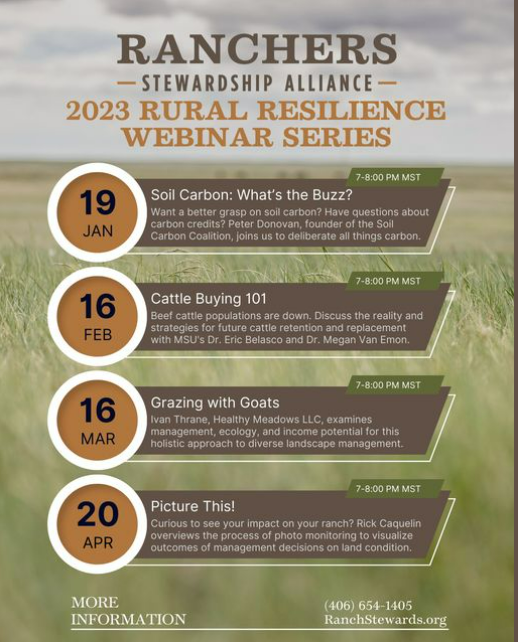 |


Public comment deadline for several proposals is February 3
Fish and Wildlife Commission to meet February 22
HELENA – Montana Fish, Wildlife & Parks is seeking public comment on several proposals slated to go to the Fish and Wildlife Commission in February. Comment is open through Feb. 3.
After public comment, commissioners can offer amendments to the proposals as they see fit. The proposals and supporting documents, commissioner amendments and collected public comment are available on the FWP website.
The commission will make a final decision on these proposals at its meeting on Feb. 22.
Fish removal projects for 2023-2026
Future Fisheries Improvement Projects, winter 2023 funding cycle
Paddlefish regulation proposed change for Intake Bypass Channel
Upper Missouri River Reservoirs 2022 regulation changes
Bear Creek Angus Conservation Easement restatement
Otter Creek LLS Islands -- expansion of Indian Fort Fishing Access Site on the Yellowstone River
501 Pemberton Lane acquisition, Billings
Ruby Dam Fishing Access Site lease agreement
Closure of Fresno Tailwater Fishing Access Site for Bureau of Reclamation Safety of Dams Project
2023-24 Flathead Indian Reservation Non-Member Fishing and Hunting Regulations
Wildlife Management Area public use rules
To comment and for more information on these proposals, go online to https://fwp.mt.gov/aboutfwp/commission/february-2023-meeting.
|
|
|
|

Multiple Use: Forest Service weighing underground carbon storage on federally managed lands.
Biden admin may boost carbon storage in national forests [r20.rs6.net], Politico Pro - The Forest Service is considering allowing greater use of the lands it oversees for sequestering and storing carbon, according to the Biden administration's latest update to proposed regulations across federal agencies. According to the regulatory agenda, the Forest Service may seek to allow "exclusive or perpetual" use of National Forest System lands for carbon capture, utilization and storage, a nod to the administration's efforts to cast forest policies as a tool to mitigate climate change. A spokesperson for the Forest Service, Wade Muehlhof, said the provision would remove an obstacle to storing carbon underground in national forests. Current regulations for special uses of National Forest System land don't allow for perpetual use, he said, which would be necessary to allow carbon storage under Forest Service land.
 2022 Census of Agriculture
The 2022 Census of Agriculture is here!
Did you get your invitation? The ag census is the nation’s only comprehensive and impartial agriculture data for every state, county, and territory. By completing the survey, producers across the nation can tell their story and help generate impactful opportunities that better serve them and future generations. It is a powerful voice for U.S. agriculture.
You need only respond once, whether securely online or by mail. The online option offers timesaving features ideal for busy producers. All responses are due Feb. 6, 2023. Farm operations of all sizes, urban and rural, which produced and sold, or normally would have sold, $1,000 or more of agricultural products in 2022, are included in the ag census. Changes for 2022 include new questions about precision agriculture, hemp production, hair sheep, and updates to internet access questions.
The data not only influence business and supply chain logistics, they inform policy and program decisions that directly impact producers, ag operations, and communities across the United States. For the latest news and updates about the Census of Agriculture, visit nass.usda.gov/AgCensus. [lnks.gd].
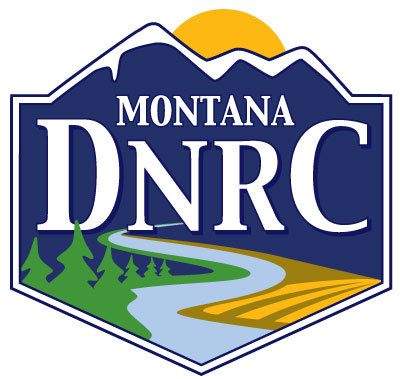 |
The last week of December, DNRC's website migrated to a new platform. Here is the new link listed below, please be patient as we work through the bugs and hopefully, we will have a much better and more fluid website.
Farmers Shawn Preputin, Larry Johnson and Alec McIntosh have been experimenting with composting in an effort to find new and better ways to feed their crops near Havre, Montana. Working with agencies such as NRCS has allowed the farmers to work, experiment, and learn together while sharing the rewards of their innovations with others.
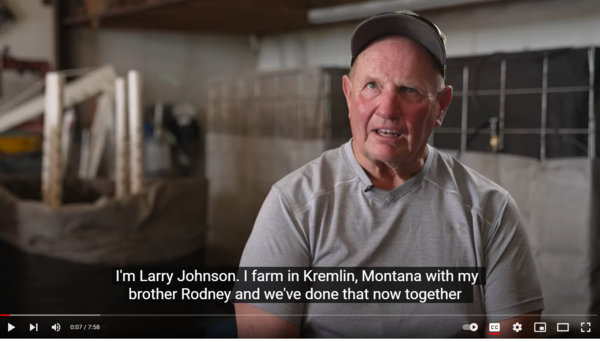
Montana State University:
Animal & Range Science
MSU Extension:
Updated MontGuides
University of Montana:
Rangeland Analysis Platform
Reversing Tree Encroachment Increases Usable Space for Sage-Grouse during the Breeding Season
USDA-Agricultural Research Service
Scientific Discoveries 2022
Rangeland Resources & Systems Research, Fort Collins, CO:
Livestock and Range Research Laboratory, Miles City, MT:
Pest Management Research, Sidney, MT:
USDA- Wildlife Services:
US Forest Service Research & Development:
Research topic: Fire
Research topic: Water, Air, & Soil
January
January 3 68th Montana Legislative Session
January 9-10 Ranching for Profit
February
February 6-9 Montana Weed Control Association Annual Conference
February 7-9 Soil Health Symposium
Stacey Barta, State Coordinator for Rangelands
(406) 594-8481
SBarta@mt.gov
Shantell Frame-Martin- program specialist
406-531-4584
shantell.frame-martin@mt.gov
Rangeland Resources Committee:
Diane Ahlgren, Chair
John Hollenback, Vice Chair
Sigurd Jensen
Jim Anderson
Leah Lewis
Ron Devlin
|